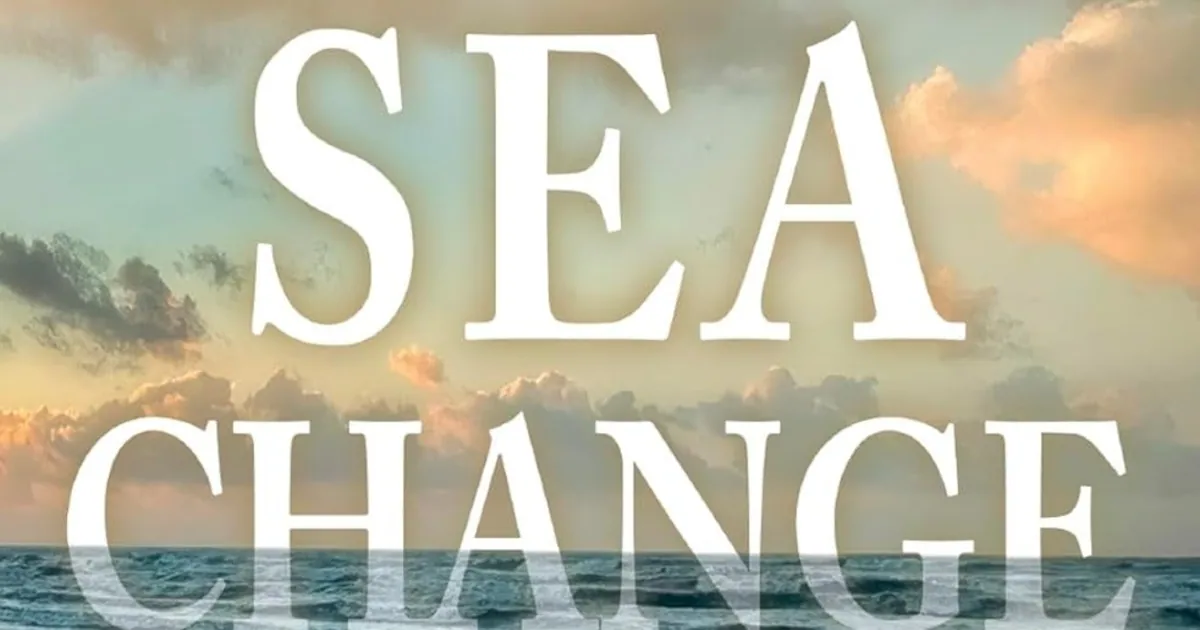Copyright Anchorage Daily News

“Sea Change: Unlikely Allies and a Success Story of Oceanic Proportions” By James Workman and Amanda Leland; Torrey House Press, 2025; 330 pages; $32. Alaskans are familiar with fishery catch shares, also known as individual fishing quotas and limited access programs, that have been implemented for federal fisheries since the 1990s as a management strategy. These programs allocate shares of fish to individuals, cooperatives, or fishing communities to reduce the “race for fish,” provide fishermen with secure shares of allowable catches, and reduce overfishing. In Alaska, affected fisheries include halibut and sablefish, Bering Sea and Aleutian Islands pollock, Bering Sea king and tanner crab, and Central Gulf of Alaska rockfish. “Sea Change,” co-authored by a San Francisco journalist and policy consultant and the executive director of the Environmental Defense Fund, from Washington, D.C., tells the story of the adoption of catch shares around the world, with particular emphasis on the fisheries of the Gulf of Mexico. The authors present what they call the “hidden world” of catch shares as a “revolutionary social contract with the sea.” The book is, for the most part, a positive review of the programs, highlighting successes and emphasizing how depleted fisheries have been restored. Controversies surrounding the programs are mentioned, usually in a context of how critics have come around to acceptance. From the preface: “By aligning nature’s integrity with human incentives, these rights-based systems secure bottom-up collaboration because they create a community of guardians for the future. Collective stewardship … has replenished some of our most depleted fisheries back into functioning ecosystems. It has empowered marginalized people, fostered innovation, improved compliance with scientific standards, and built resilience against a rapidly changing world. … America’s quietly effective strategy to replenish the ocean offers a blueprint for other nations — and other natural resources challenges — to follow.” In a smart strategic move of their own, the authors chose to tell their story around the life and personality of one Galveston fisherman, Buddy Guindon, who went from being a rules-pushing highliner to a shares advocate and a global “ambassador” for the programs and their benefits for fishermen, markets, and conservation. Following Buddy’s colorful life gives the book a strong human interest narrative and saves it from falling into the weeds of policy and technology details. Buddy began his life sportfishing in Minnesota with his father. His father later relocated to Texas, and, after military service, Buddy joined him there, did various jobs until he could buy a fishing permit, then a boat, then a bigger boat. He opened a seafood market. He worked hard and became a highliner, just as his targeted fish, red snapper, grew depleted and new regulations made it harder to earn a living. Fishermen he knew traveled to New Zealand in 2005 to learn about catch shares and returned as converts. Buddy took longer to accept the system and voted “no” on referendums supporting the concept and its allocation plan. Once shares were adopted, he witnessed fishermen spread their fishing across the year, make shorter trips, and sell higher-quality fish at higher prices. “Deep in his gut, Buddy was realizing how profoundly he’d been wrong.” He bought additional shares. Buddy turned his considerable energy to supporting the system, joining the board of the Gulf of Mexico Reef Fish Shareholders’ Alliance, which was dedicated to “resource stewardship, environmental protection, targeted advocacy, reduced discards of vulnerable species, safety at sea, and enhancing the economic value of the fishing industry.” He began a marketing program — Gulf Wild. Soon he was advising other parts of the country and other nations. He helped Gulf fishermen survive the devastating BP oil spill and later traveled to Japan to help fishermen and marketers find similar resilience after the Fukushima disaster. He worked with scientists to improve surveys and technology. He started a campaign, Share the Gulf, to fight against the shifting of rights to sport fishermen and took fishermen to D.C. to lobby. He later worked with sports fishermen on another share plan. He starred in a reality TV show called “Big Fish, Texas.” Interwoven with Buddy’s life and roles, the authors include historical perspectives and examples of catch share and related systems from elsewhere, scientific research, and technological advancements including “smart boats” and vessel monitoring systems. They also include discussions of ocean conservation measures, threats to fisheries including environmental change and fish farming, conflicts between commercial and recreational fishermen, and partnerships between fishermen and environmentalists. With Alaska’s dominant role in American fisheries and its early adoption of catch share programs, it’s surprising that “Sea Change” refers so seldom to Alaska or Alaskans. The references are few and brief — Sen. Ted Stevens’s role in the Magnuson-Stevens Act, Don Young’s complaints about the observer program, the adoption of Alaska pollock rationalization and community development quotas, the dangers of Bering Sea crabbing before shares, Arni Thomson writing about deadly fisheries and his advocacy for Alaska crabbers, a survey of Alaska halibut fishermen that said that 85% felt that fishing was safer under the quota system, the Alaska Longline Fishermen’s Association’s program to support new entrants into halibut and sablefish fisheries and its support, via Linda Behnken, for video surveillance systems. Late in the book, where once again the authors emphasize the benefits of catch shares and make the case for meeting global nutritional needs by reducing waste to less than a third of what it had been, the authors opine this: “In a time of extreme inequality — and of political hand-outs of federal lands and resources to the special interests that fund campaigns — public debate about access to public resources remains more vital than ever.” “Sea Change,” despite its overt advocacy for catch shares, proves a very helpful and well-resourced primer for understanding both regional and global fisheries management, trends in fishing innovations and technologies, and the political effectiveness of individuals and coalitions. [Book review: New memoir covers the long and rich history of the famed flying Wien family in Alaska] [A fixture in Alaska’s literary community, Don Rearden has flourished as writer and teacher]



